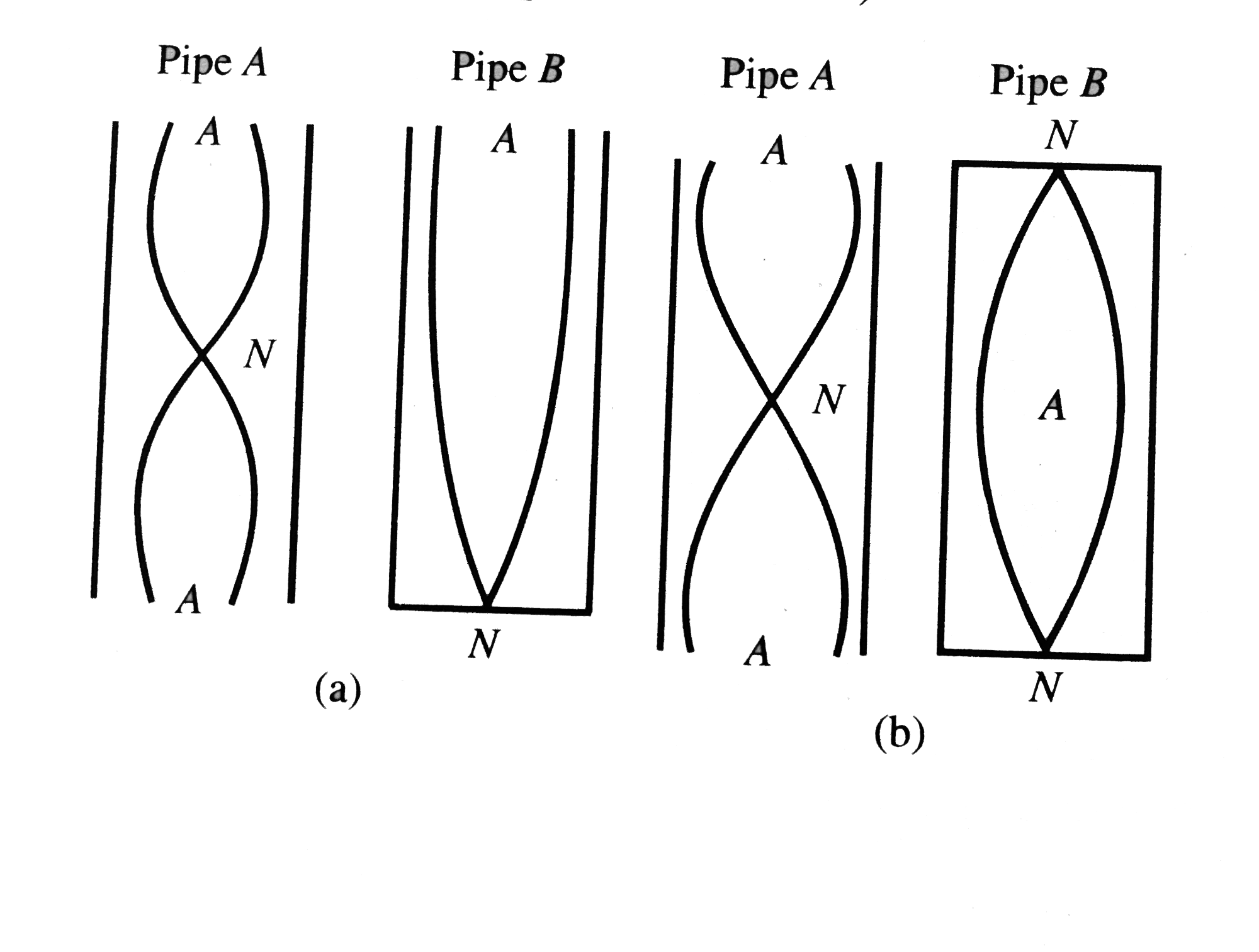Two narrow cylindrical pipes A and B have the same length. Pipe A is open at both ends and is filled with a monoatomic gas of molar mass MA. Pipe B is open at one end and closed at the other end and is filled with a diatomic gas of molar mass MB. Both gases are at the same temperature.
(a) If the frequency of the second harmonic of the fundamental mode in pipe A is equal to the frequency of the third harmonic of the fundamental mode in pipe B, determine the value of mAMB.
(b) Now, the open end of pipe B is also closed (so that the pipe is closed at both ends.) Find the ratio of the fundamental frequency in pipe A to that in pipe B.
a. If L is the length of each pipe AandB , then fundamental frequency of pipe A ( open at both ends )
nA=vA2L (i)
Fundamental frequency of pipe B ( closed at one end)
nB=vB4L (ii)
Given 2nA=3nB
2(vA2L)=3(vB4L)
⇒vAvB=34
But vA=√γARTAMA,vB=√γBRTBMB
Given TA=TB
For monoatomic get
γA=53
For diatomic get
γB=75
∴vAvB=√{γAγB)MBMA
√(5/3)(7/5)MBMA
=√2521MBMA
(i) From Eqs.(iii) and (iv)
√2521MBMA=34
(ii) MAMB=(43)2×2521=400189
b. When pipe B is closed at both ends , fundamental frequency of pipe B becomes
nB=vB2L (v)
Using Eqs. (i) ,(iii) and (v) , we get
iii. nAnB=vAvB=34

Similar Questions
An organ pipe, open at both ends, contains
View SolutionAt the open end of organ pipe
View SolutionA closed organ pipe and an open organ pipe are tuned to the same fundamental frequency. The ratio of their lengths is
View SolutionA closed organ pipe and an open organ pipe are tuned to the same fundamental frequency. The ratio of their lengths is
View SolutionShow that an organ pipe of length 2l open at both ends has the same fundamental frequency as another pipe of length I closed at one end.
View SolutionWhat should be the ratio of the lengths of a closed pipe and an open pipe, so that the frequency of their First overtones are the same.
View SolutionThe fundamental frequency of a pipe closed at one end is 100Hz. If close end is open the fundamental frequency of same pipe wil be
View SolutionThe fundamental frequency in an open organ pipe is equal to the third harmonic of a closed organ pipe. If the length of the closed organ pipe is 20 cm, the length of the open organ pipe is
View SolutionIf the fundamental frequency of a pipe closed at one is 512HZ . The frequency of a pipe of the same dimension but open at both ends will be
View SolutionAn open pipe is suddenly closed at one end with the result that the frequency of third harmonic of the closed pipe is found to be higher by 100Hz then the fundamental frequency of the open pipe. The fundamental frequency of the open pipe is
View Solution
